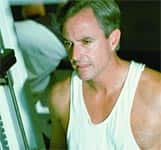Life Extension Magazine®
Data gathered in the Third National Health and Nutrition Exam Survey (NHANES III), conducted in two phases from 1988 to 1994, show that more than half of all US adults are considered overweight or obese. Excessive body weight places a strain on the heart, vascular system, and skeletal structure. According to the National Institutes of Health, many serious health disorders such as hypertension, coronary artery disease, and degenerative joint disease occur with significantly greater frequency in the overweight and obese. Abdominal obesity is one of the primary symptoms of metabolic disorder, or Syndrome X, and has been identified as a primary risk factor for the development and progression of type II diabetes.1 Studies have shown that weight loss reduces blood sugar levels, and one study concluded that “a modest amount of sustained weight loss can substantially reduce the risk of diabetes mellitus in overweight individuals.”2 A treatment program that effectively addresses obesity will not only improve a patient’s general health, but also may help prevent or reverse the ravages of elevated blood sugar, or hyperglycemia. BackgroundBob was a 49-year-old male who held a high-profile government job when he came to me for treatment. Although he had a six-year history of diabetes, the chief complaint of this 6’1”, 272-pound patient was obesity, a condition that had plagued him since his mid-thirties. Bob felt his excess weight was finally catching up to him and was responsible for his increasingly frequent bouts of fatigue. At the initial consultation, he also complained of frequent urination, skin irritation and discoloration, loss of sensation in his fingertips, and recent episodes of erectile dysfunction. During the previous decade, Bob had diligently tried to lose weight on his own by trying many popular diets. His experience with each was frustratingly similar: loss of about 10 pounds over six to eight weeks, stable weight for one month, then a gradual regaining of all of the weight he had initially lost. Bob understood that frequent, job-related travel and the abundant food and alcohol served at political functions hindered his efforts to shed the excess weight, but even acquaintances who did not share his lifestyle seemed to have as much trouble losing weight and keeping it off. He wanted an effective, lasting solution that would not add another prescription medication to those he was already taking to control his blood sugar.
Diagnosis and TreatmentToday, doctors have become highly specialized and conditioned to treat specific symptoms with specific drugs. In my opinion, this approach makes as much sense as pumping water out of the basement of a flooded house without repairing the gaping hole in the roof. The human body consists of complex and intricately connected organs and systems. Health complaints are rarely confined to one area, attributable to one thing, or best treated using a single modality. Bob’s complaints were multifactorial and required a thorough examination before a course of action could be recommended. At the Place for Achieving Total Health, or PATH Medical, that starts the way most of us came into the world—head first. My 30-plus years in medicine have been dedicated to the brain’s role in maintaining health and treating illness. Brain chemicals called neurotransmitters generate the electrical impulses that deliver energy and instructions to the entire body, enabling it to maintain healthy function. Deficiencies in the primary neurotransmitters cause specific “short circuits” that show up in families of symptoms and conditions. For example, serotonin deficiencies have been associated with headaches, depression, and insomnia,3 gamma-aminobutyric acid (GABA) deficiencies with palpitations, anxiety, and hypertension,4 and acetylcholine deficiencies with dry mouth, senility, and Alzheimer’s.5 I suspected that Bob had a significant deficiency of dopamine, which has been associated with symptoms of fatigue, obesity, and sexual dysfunction, as well as other conditions such as addiction and Parkinson’s disease.6-9 Neurotransmitter levels can be assessed in a primary care setting with a simple brain electrical activity map (BEAM) test that uses electrodes (similar to those used in an electrocardiogram, or EKG) attached to the scalp and connected to a computer via a special interface. The brain’s electrical activity is represented by brainwaves, and a specific electrical measurement corresponds to each primary neurotransmitter. Speed (wave frequency) is how acetylcholine is measured, rhythm (wave pulse) is how GABA is measured, synchrony (wave symmetry) is how serotonin is measured, and voltage (wave amplitude) is how dopamine level is measured. Bob’s brain voltage was 4.4 µV (microvolts), well below the normal level of 10 µV. An echocardiogram was normal, as were carotid and thoracic ultrasound tests. There was, however, slightly diminished peripheral blood flow, and some remarkable blood testing results, as shown below. Optimal ranges are indicated in parentheses. Given Bob’s history of obesity, his elevated levels of lipids and other cardiovascular risk indicators were not surprising. Nor was his low testosterone unexpected, given low testosterone’s association with the incidence of diabetes and sexual dysfunction.10,11 His blood sugar level, however, was alarming, considering that Bob was already taking two prescription medications to control blood glucose. A multimodal approach was implemented to address his obesity, diabetes, and other complaints, and to reduce his elevated risk for heart disease and stroke.
Dietary changes are the first order of business in treating both obesity and diabetes. The latest research suggests that substituting dietary protein and healthy fats for some of the complex carbohydrates in the standard diabetic diet will support weight loss and promote healthy blood glucose levels.12 Bob was put on the Rainbow Diet™, a scientifically based program that incorporates nature’s healthiest foods from the entire color spectrum. This diet also takes advantage of new discoveries, such as spices with antioxidant, anti-cancer, and appetite-suppressant properties, and teas loaded with anti-inflammatory compounds. We recommended a menu of 15% protein (such as chicken and legumes), 40% monounsaturated and polyunsaturated fats (including olive, canola, safflower, and sunflower oils, nuts such as almonds, cashews, and walnuts, and fish such as salmon, mackerel, and sardines), and 45% complex carbohydrates (such as whole grains, leafy vegetables, grapefruit, and cherries). Bob was encouraged to use cinnamon because of its known glucose-reducing effects.13 Bob’s program also included a comprehensive supplement regimen:
To complement Bob’s diet and supplement regimen, I outlined a cardiovascular and weight-bearing exercise program. Finally, to bolster his metabolism, reduce his fatigue, control his blood sugar, and counteract his erectile dysfunction, I prescribed a testosterone patch (5 mg). I secured Bob’s commitment to all elements of his treatment plan, and followed up with him regularly. After six months, Bob had lost 27 pounds and his blood profiles were much improved. He was recovering brain energy, his voltage having risen to 6.7 µV. He had not had any episodes of erectile dysfunction during that period, and remarked that he felt much better overall, even though his urinary frequency and dermatitis were only slightly improved. He was motivated to stay the course. At 12 months, he had lost 42 pounds and all his blood parameters were within normal ranges, with the exception of fasting glucose at 132 mg/dL and HbA1c at 8.7%. His brain voltage was 8.6 µV. Six months later, Bob had lost an additional seven pounds. At this time, his glucose level was within normal limits, and his HbA1c had dropped dramatically to 5.2%. His urination was normal, and only two skin lesions remained. Bob discontinued his blood sugar medications. While he still had to lose an additional 13 pounds to reach his goal of 210, he had no doubt he would get there by remaining faithful to his integrative treatment plan.
CommentaryMedical problems often involve multiple factors—including a brain component—and one or more related conditions. Furthermore, a patient’s chief complaint may not be the only condition meriting attention by a physician. While Bob’s obesity was cause for concern and treatment, his insufficiently controlled diabetes and ominous cardiovascular profile demanded attention as well. Bob’s diminished brainpower indicated that his metabolism was sluggish. He was not getting the energy he needed, which may have caused him to overeat in an attempt to compensate. His obesity was linked to his diabetes and impending cardiovascular disease, and his testosterone deficiency had implications for both his diabetes and erectile dysfunction. My anti-aging protocols involve maintaining neurotransmitters and hormones at optimal levels, while my treatment protocols involve correcting brain chemical and hormone imbalances. Treating Bob’s obesity using an integrative approach resulted in marked improvement in both his diabetic condition and overall health. Dr. Braverman is the founder and director of PATH Medical in New York City (212-213-6155). He is the author of seven books, including The Edge Effect (Sterling Publishing Co., 2004). For more information, visit www.EdgeEffect.org and www.pathmed.com. | ||||||||||||||||||||||||
| References | ||||||||||||||||||||||||
| 1. Must A, Spadano J, Coakley EH, et al. The disease burden associated with overweight and obesity. JAMA. 1999 Oct 27;282(16):1523-9. 2. Moore LL, Visioni AJ, Wilson PW, et al. Can sustained weight loss in overweight individuals reduce the risk of diabetes mellitus? Epidemiology. 2000 May;11(3):269-73. 3. Ozyalcin SN, Talu GK, Kiziltan E, et al. The efficacy and safety of venlafaxine in the prophylaxis of migraine. Headache. 2005 Feb;45(2):144-52. 4. Shizuka F, Kido Y, Nakazawa T, et al. Antihypertensive effect of gamma-amino butyric acid enriched soy products in spontaneously hypertensive rats. Biofactors. 2004;22(1-4):165-7. 5. Dawson LJ, Field EA, Harmer AR, Smith PM. Acetylcholine-evoked calcium mobilization and ion channel activation in human labial gland acinar cells from patients with primary Sjogren’s syndrome. Clin Exp Immunol. 2001 Jun;124(3):480-5. 6. Fang YJ, Thomas GN, Xu ZL, et al. An affected pedigree member analysis of linkage between the dopamine D2 receptor gene TaqI polymorphism and obesity and hypertension. Int J Cardiol. 2005 Jun 22;102(1):111-6. 7. Lorist MM, Tops M. Caffeine, fatigue, and cognition. Brain Cogn. 2003 Oct;53(1):82-94. 8. Lou JS, Kearns G, Benice T, et al. Levodopa improves physical fatigue in Parkinson’s disease: a double-blind, placebo-controlled, crossover study. Mov Disord. 2003 Oct;18(10):1108-114. 9. Gonzalez-Cadavid NF, Rajfer J. Therapy of erectile dysfunction: potential future treatments. Endocrine. 2004 Mar;23(2-3):167-76. 10. Pitteloud N, Mootha VK, Dwyer AA, et al. Relationship between testosterone levels, insulin sensitivity, and mitochondrial function in men. Diabetes Care. 2005 Jul;28(7):1636-42. 11. Albrecht-Betancourt M, Hijazi RA, Cunningham GR. Androgen replacement in men with hypogonadism and erectile dysfunction. Endocrine. 2004 Mar;23(2-3):143-8. 12. Gannon MC, Nuttall FQ. Effect of a high-protein, low-carbohydrate diet on blood glucose control in people with type 2 diabetes. Diabetes. 2004 Sep;53(9):2375-82. 13. Khan A, Safdar M, Ali Khan MM, Khattak KN, Anderson RA. Cinnamon improves glucose and lipids of people with type 2 diabetes. Diabetes Care. 2003 Dec;26(12):3215-8. 14. Rabinovitz H, Friedensohn A, Leibovitz A, et al. Effect of chromium supplementation on blood glucose and lipid levels in type 2 diabetes mellitus elderly patients. Int J Vitam Nutr Res. 2004 May;74(3):178-82. 15. Morishita M, Kajita M, Suzuki A, et al. The dose-related hypoglycemic effects of insulin emulsions incorporating highly purified EPA and DHA. Int J Pharm. 2000 May 25;201(2):175-85. 16. Zhang H, Osada K, Maebashi M, et al. A high biotin diet improves the impaired glucose tolerance of long-term spontaneously hyperglycemic rats with non-insulin-dependent diabetes mellitus. J Nutr Sci Vitaminol (Tokyo). 1996 Dec;42(6):517-26. 17. Weickert MO, Pfeiffer AF. Preventing type 2 diabetes: what does dietary fiber achieve? MMW Fortschr Med. 2005 Apr 28;147(17):28-30. 18. D’Astous M, Morissette M, Tanguay B, Callier S, Di Paolo T. Dehydroepiandrosterone (DHEA) such as 17beta-estradiol prevents MPTP-induced dopamine depletion in mice. Synapse. 2003 Jan;47(1):10-4. 19. Mehta MA, Gumaste D, Montgomery AJ, McTavish SF, Grasby PM. The effects of acute tyrosine and phenylalanine depletion on spatial working memory and planning in healthy volunteers are predicted by changes in striatal dopamine levels. Psychopharmacology (Berl). 2005 Jan 26. 20. Georgiades E, Behan WM, Kilduff LP, et al. Chronic fatigue syndrome: new evidence for a central fatigue disorder. Clin Sci (Lond). 2003 Aug;105(2):213-8. 21. Arafa HM. Curcumin attenuates diet-induced hypercholesterolemia in rats. Med Sci Monit. 2005 Jul;11(7):BR228-34. 22. Thomas SR, Leichtweis SB, Pettersson K, et al. Dietary cosupplementation with vitamin E and coenzyme Q(10) inhibits atherosclerosis in apolipoprotein E gene knockout mice. Arterioscler Thromb Vasc Biol. 2001 Apr;21(4):585-93. 23. Mas R, Castano G, Fernandez J, et al. Long-term effects of policosanol on obese patients with Type II Hypercholesterolemia. Asia Pac J Clin Nutr. 2004;13(Suppl):S102. 24. Wieneke H, Schmermund A, Erbel R. Niacin--an additive therapeutic approach for optimizing lipid profile. Med Klin (Munich). 2005 Apr 15;100(4):186-92. 25. Watala C. Blood platelet reactivity and its pharmacological modulation in (people with) diabetes mellitus. Curr Pharm Des. 2005;11(18):2331-65. 26. Clarke R, Armitage J. Vitamin supplements and cardiovascular risk: review of the randomized trials of homocysteine-lowering vitamin supplements. Semin Thromb Hemost. 2000;26(3):341-8. 27. Lebret T, Herve JM, Gorny P, Worcel M, Botto H. Efficacy and safety of a novel combination of L-arginine glutamate and yohimbine hydrochloride: a new oral therapy for erectile dysfunction. Eur Urol. 2002 Jun;41(6):608-13. |




